The Year of Purpose
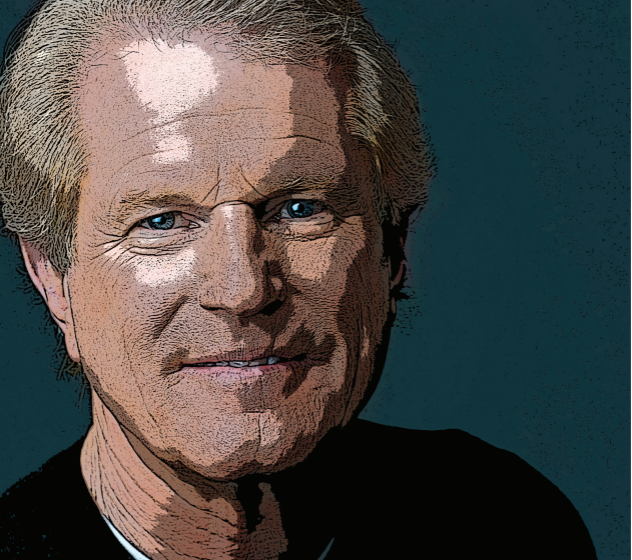
GSD&M Co-founder and Chairman Roy Spence’s Make It Movement encourages young people to learn more and earn more.
Creating awareness and finding purpose has been Roy Spence’s bread and butter for the last five decades at GSD&M, an Austin-based advertising agency he co-founded in 1971 and for which he still sits as chairman, with three of his closest college friends—Steve Gurasich, Judy Trabulsi, and Tim McClure. Then at The Purpose Institute, a consulting firm he co-founded in 2009 to help companies find their purpose, he serves as chief executive officer. Now, as founder of the Make It Movement, his newest endeavor, he strives to help middle school and high school students find their purposes and future careers while they are still in school.
Arguably, he might have influenced the evolution of the newest C-suite position companies across the US are implementing: chief purpose officer.
Spence speaks in taglines, at times. It seems to be the way his mind works, creating memorable phrases to raise awareness. He is also almost always teaching or learning something, and oh, he has stories.
When we spoke with Spence, he had just gotten off the phone with Bill Clinton. If he wanted to name people with whom he has worked, it would sound like a who’s who in politics, business, and beyond. He’s worked with former US presidents on public service announcements (PSA) for Hurricanes Irma and Harvey. He has created memorable ad campaigns for Southwest Airlines, the US Air Force, and Walmart, among a host of others. He’s even taken a collect call (for readers who remember those) from the late Sam Walton, the founder of Walmart Stores, Inc., which was the beginning of a long-term business relationship and friendship.
But amidst the celebrity, Roy Spence seems to be an approachable, down-to-earth, welcoming guy. He shares what he knows in an all-or-nothing fashion, filled with nuggets of wisdom for anyone who will listen. He’s written and co-written four books and is working on another.
In December 2022, Spence was named the Greater Austin Chamber of Commerce’s 2022 Austinite of the Year, an award that recognizes “significant leaders in the local community who were instrumental in making Austin an even better place to live, work, and do business,” according to the chamber’s announcement.
“I think it’s a great honor, and I appreciate it,” he says. “But I don’t deserve it.”
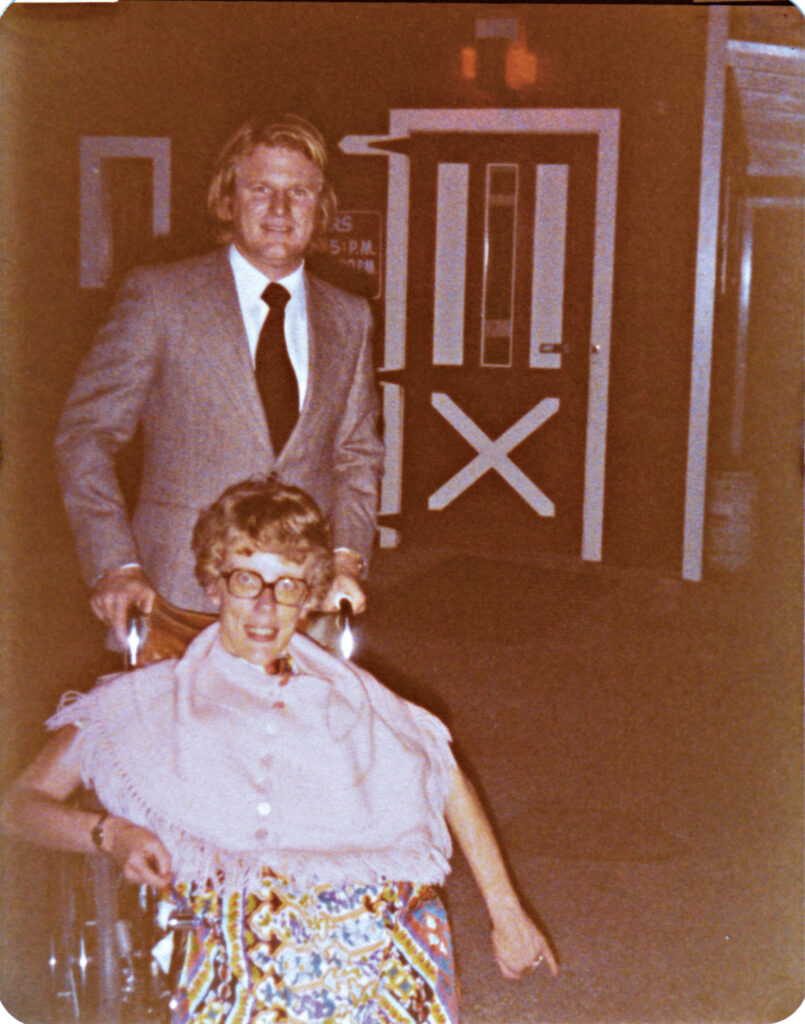
Spence hasn’t done the work he’s done for accolades. He is keen on bridge building and making the city in which he lives better by bringing people together. It’s been part of his modus operandi for the more than 50 years he has lived and done business in Austin. Spence not only met his business partners and his career destiny in Austin, he also met his wife, Mary Couri Spence, in Austin. They have been married 45 years and have three children, Courtney, Ashley, and Shay, and two grandchildren, Charlie and Scarlett.
But purpose is always in the background. When it comes to purpose, he often circles back to his roots and family, growing up in Brownwood, and the ways those people and events shaped who he has become. He leans on the lessons he learned from his mother, father, and sister, who was born with spina bifida.
“She was supposed to live to be four days old,” Spence says. She lived to be 49. When he was young, Spence helped care for her, pushed her to school, and watched her graduate from high school.
“When she died,” he says, “I was maybe 40-something, and I realized all those years
I thought I’d been pushing her, she’d been pushing me.” She helped introduce him to the concept of purpose.
A big step in his journey toward purpose as a professional, he says, came when GSD&M co-founder Tim McClure came up with the anti-litter campaign slogan “Don’t mess with Texas.” Most Texans know the famous line, which has been used in innumerable ways since the campaign launch in January 1986.
Spence remembers that their take on an anti-litter campaign differed greatly from those in the 1970s, like “Give a hoot, don’t pollute” and crying Native Americans.
“We came up with the line: Don’t mess with Texas. And we pitched it,” he says. “We were kids, and the average age of the Highway Commission who was going to decide who got the account was maybe 100 years old. They were looking at us like, Don’t mess with Texas? What the hell are you talking about? And we said, ‘Well, we don’t know much about it, but we think all those other campaigns appeal to the people who don’t litter.’ And an old boy in the back said, ‘Let’s go with it.’ ”
The campaign reduced litter in Texas by 29 percent in its first year. A 1998 Litter Attitudes and Behavior Study, commissioned by the Texas Department of Transportation, found that litter had been reduced by 70 percent since the campaign began 12 years prior.
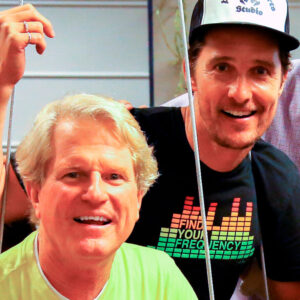
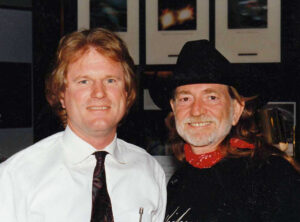
The first campaign commercials featured Stevie Ray Vaughan, and through the years, the likes of Willie Nelson, George Strait, Matthew McConaughey, Erykah Badu, and many others have lent their voices to campaign PSAs. Don’t Mess With Texas is still going strong, 37 years later.
That slogan ended up teaching the GSD&M team a lesson Spence still sees as foundational today: Maybe marketing can be a force for good.
We sat down with Roy Spence and talked about his most recent endeavor, the Make It Movement, returning to that one word—purpsoe—and the push to be a force for good.
Tell us about the Make It Movement.
About four years ago, I was going around the country speaking to maybe 300,000 people for The Purpose Institute, and I kept looking for the one thing we all agree on, the one thing. I couldn’t find it.
But finally, I started realizing all of these millions and millions of high-skill, high-income careers, they’re not jobs anymore. They’re careers, and no young people know about them. Maybe the one thing we all agree on as Americans in Texas is: We all want our kids to be successful.
It just hit me one day, like, my God, whether you’re a Democrat, Republican, we all want our kids to be successful. So I created the Make It Movement because I realized that if we don’t let young people know while they’re in middle school, while they’re in high school, about this whole new world of high-skill, high-income careers that are out there, they’ll be lost.
The Make It Movement’s core purpose is to help young people discover what they’re good at, and then allow them to become great at it.
Young people understand the four-year path. They get it, and I’m for that. But they don’t know if you don’t do that, everything else is an alternative, not an equal path.
Long story short, school superintendents, CTE [career and technical education] instructors, school counselors are endorsing this. You know why? They’re lost, too. They’re looking at the website MakeItMovement.org, and they’re going, “Oh, my God. I can take Johnny or Barbara, who’s 14, to the website and walk them through it.” And when they’re 14, 15, and 16, when they don’t have to make a decision, they can start looking at the world out there.
I’m in the purpose business because I believe purpose is what drives everyone. Young people are looking for purpose in their lives more than ever before.
I grew up in the little town of Brownwood, Texas. Mom was a civics teacher. I was taking English and turned in a paper on Emerson in the eighth grade, and I had eight misspelled words. There’s a big C-minus, and I went home to my mom. Mom didn’t say anything about the C-minus, so I thought I got by with it. But the next year I’m studying Emerson in the ninth grade, and I said, “Mom, I can’t do this.” And she said, “Do the best you can.” Turned it in. I didn’t have eight misspelled words. I had 11, and red was everywhere. The top of the paper was this tiny A-minus.
I said, “Mom, I don’t get it.”
She said, “You can’t spell, but I talked to your English teacher, and she thinks you can write.” My momma put her arm around me and said, “I don’t want you to spend another day of your life trying to be average at what you’re bad at. I want you to spend the rest of your life becoming great at what you’re good at.”
The Make It Movement’s core purpose is to help young people discover what they’re good at, and then allow them to become great at it … to help young people discover their purpose early in life.
It’s reminiscent of Mike Rowe and his philosophy of highlighting jobs that might be off the college radar.
Same thing. And, I’m saying one thing: You have to use marketing as a force for good to reach, connect, inspire, and motivate young people. We have an awareness and marketing crisis in America.
Before and after we have done the Make It Movement [program] with kids—Are you confident about your future after high school?—[Before], 36 percent. We spend 30 minutes with them. Almost 67 percent say, “I’m confident.” Why? They’ve seen something. “Oh, my God. I might want to be a welder. Don’t tell my mom.” Then the moms see it, and she goes, “You’re going to make $75,000?”
It’s not just higher education to higher income. It’s, learn more, earn more. Doctors, learn more, earn more. Welders, learn more, earn more. And these kids go, “I want to learn more if I’m loving what I’m doing.”
I’ve branded my new campaign. It’s going to be: 2023, the year of purpose. Politics was 2022. Politics will be 2024. Let’s make this the year of purpose.
MakeItMovement.org has been up and running for a little over a year. What kinds of successes have you seen, and what challenges have arisen?
We’ve put together alliances in Texas and around the country. We’ve got everybody now believing if we don’t market to these young people, if we don’t message to them, if we don’t create massive awareness and wow them with what is out there, they will all be lost unless they find their purpose. So, our biggest challenge is putting together that alliance. The Texas Workforce Commission, Texas Association of Business, City Workforce Solutions agencies, community colleges, technical colleges, school counselors—I’m bringing them all together to make sure every kid has a chance to make it in Texas.
Look at the careers out there. I’ll use the example of a ditch digger. If you’ve got a license to work and you’re a certified ditch digger—I’m making it up—and you love to work outside, by the time you’re 21 you’re making $80,000 a year. But you have to have that license to work, whether it’s a doctor, a lawyer, or a ditch digger, and that’s what I’m telling them.
Learn more, earn more.
The Make It Movement doesn’t just focus on trade schools. It’s colleges and universities, too?
Community colleges, technical colleges. We are focused on internships and apprenticeships and the two-year path basically, only because if you promote the four-year path—we’re not against it—but they already know about that one. You’ve
got to promote the new path.
It sounds like you started off with simple goals at GSD&M: Keep the friend group together, make a lot of money, and have fun doing it. Here you are 50 years later still doing all those same things.
There’s a lot of work going on now, but for me, I started realizing that Aristotle might be right. Aristotle said, “Where your talents and the needs of the world intersect, therein lies your vocation.” Where your talents—not your sister’s, not your son’s—where your talents and the needs of the world intersect, therein lies your purpose.
As our partnership grew, we realized we were going to be different. We married the doers and dreamers. The dreamers, we see the mountaintop; we just don’t know how to get there. The doers will climb all the wrong mountains, perfect. Marry the doers and dreamers.
I tell this to CEOs, “Get the in-betweeners out. Find the doers and dreamers.”
Our leadership style was based upon the philosophy that we look for people’s strengths and not weaknesses. We made mistakes, don’t get me wrong, but what gets me going every day is a belief that we can make a difference and we can use marketing as a force for good.
You say, “Using marketing as a force for good,” and you’re connecting that with the Make It Movement. How do you see that as marketing?
Right now, we try to change young people’s behavior around their skills and their careers by spending money on all these new programs. If you don’t create awareness first, these kids don’t know what’s out there.
You go to our website, and you see these welders and construction workers and coders. They’re telling their life stories, and these young kids are going, “Oh, my God. They were like I am.” So, awareness.
Then you have to change perception, and you don’t do it through book studies when they’re going, “I thought you can only make a lot of money if you go to college.” No. Then you change behavior.
We’ve got to reach kids while they are in middle school and high school, and we’ve got to create awareness and change perception before we can change behavior—and we’ve got to scale it across America.
Who has had the biggest influence on how you lead? And how so?
Herb Kelleher, founder of Southwest Airlines. I met him when I was 28 years old, and he hired us. He had 28 airplanes, and we were 28 years old. The reason Herb had the biggest influence on me is that he was the first CEO in America to believe that his employees were his number-one customer. Now everybody says it.
Also, he said it’s okay to laugh and have fun and be extra kind to everybody you meet because everybody’s fighting a battle.
And my sister because of her purpose. Also, my mom because she taught me to try and become great at what you are good at.
My dad taught me to hug people. He was a hugger. He lived to be 97 years old, and he grew up in a little town. He spoke Spanish before English, and his name was Roy. He called me Royito all my life, “Little Roy,” and he said, “Be kind to people,” And then he would say, “And don’t do mild in business or life or food.” So, I created Royito’s Hot Sauce. The purpose of the salsa is to inspire people to “don’t do mild” in life.
It sounds like all of your visions aligned. That’s not always the case. You’ve been lucky in that.
I hadn’t thought about that. Yes, I have.
So what is the biggest lesson that you’ve learned in your career?
The biggest lesson is, and it goes back to Herb: The number one job of a CEO is to protect your troops, period. Protect your troops; protect your employees.
How big a part does continual learning play in your professional development?
Critical, because I don’t have a corner on the smarts, and if you can fess up to that, that’s another huge lesson. Fess up when you mess up as a leader. Now if you mess up too often, you get fired.
Continual learning is so boring a thought. But Jim Collins said, “You’re only as young as the new things you do.” Between when you’re born and 29–30, everything is new, and then no matter what you think, if you don’t do things that are new, you’re going to be stuck. Part of that constant renewal as a leader is doing new things.
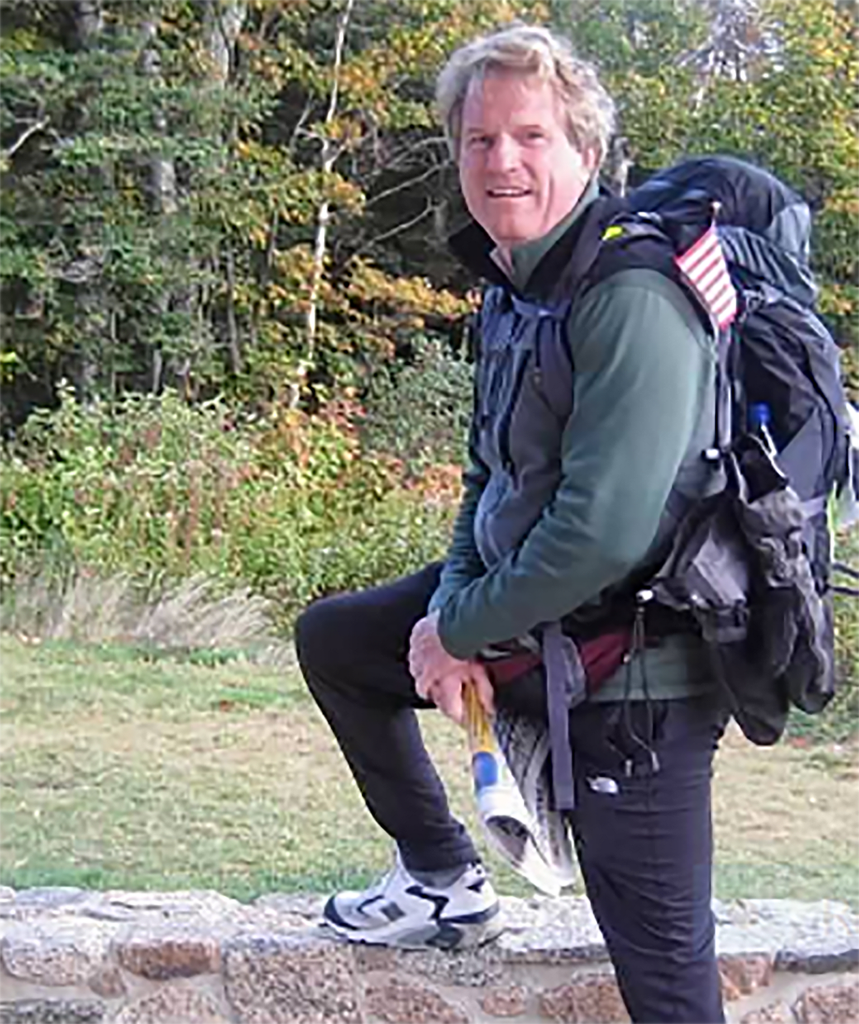
That’s why I like to walk, because you never know a neighborhood unless you walk it. When I walked through America, I learned. I was 21 days on the road by myself with a backpack. My wife thought I was insane, but I was on the road to discover goodness. I found another great lesson: You become what you look for in life. If you look for enemies, you’ll find them. If you look for hate, it’ll live in your heart. If you look for gossip, it’ll consume you. If you look for fear, it’ll follow you. But if you look for friends, you’ll be befriended, and if you look for love, it lives right here. If you look for the truth, it’ll set you free, and if you look for hope over fear, it’ll take you to higher ground.
When I’m by myself, walking, I load all of this stuff in my head, and I start putting it down. But you become what you look for in life. I encourage my kids and my associates to look for goodness. It’s harder. Badness is easy, especially with social media. Look for friends. Look for the truth, and look for hope.
That’s really powerful. What advice would you have for someone who dreams of being a CEO?
Ask, why? Why do you want to be a CEO? Nine times out of 10, “Well, I’m tired of being told what to do. I want to tell people what to do.” Now they don’t say it that way, but they’re saying, “I’m tired of being bossed around. I want to be the boss. I’ve got a vision, and no one listens to me.” Then I’ll ask them, “So why, again, do you want to be a CEO?” If they’re not saying, “So I can make a difference with my products or services,” then they’re not a great purpose leader. They’re a leader of power, not purpose. The great visionary companies are the ones that always have purpose over profits, still to this day.
You become what you look for in life. … If you look for hope over fear, it’ll take you to higher ground.
Lastly, on the GSD&M team webpage, you’re called “the Reverend.” How do you feel about that?
I love it, whatever it is. Bottom line is I learned that at some point you can preach and teach at the same time. A lot of times if you preach and you’re only preaching, you’re not teaching. So I’ve tried to preach and teach. I have no idea if it worked.
I always tell people, “I’m here to enlighten, not educate.” Educating is boring. Enlightening is getting people to understand things they don’t know, and I got lucky because that’s what happened with all my mentors. They enlightened me. They didn’t teach me. They enlightened me, and when you get enlightened, that builds knowledge.
I don’t know if my conversation is important to other people. I think that I got lucky, and I did. Here’s what I learned—and I mean this—you don’t know anything when you’re born, but you learn everything. If you have good mentors, you learn good things. I always tell people I don’t know anything, but here are some lessons I’ve learned.






